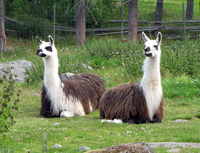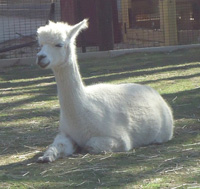 Explore our wide variety of animal facts and learn some fun trivia about our friends in the animal kingdom.
 Fun Llama & Alpaca Facts for Kids Fun Llama & Alpaca Facts for Kids
Check out our range of fun llama and alpaca facts for kids. Learn their differences, what they look like, where they live, what they eat, why they sometimes spit and much more. Read on for all kinds of interesting information! | | |
- Llamas are large, domesticated animals related to camels.
- They are native to South America and have been used since the Inca Empire as pack animals and for their meat and wool.
- They can walk for around 10 km (6 miles), carrying packs as heavy as 30% of their body weight.
- Llamas can grow to a height of around 1.8 m (5 ft 9 in).
- The name for a baby llama is cria.
- Llamas live in herds and are social animals.
- As domesticated animals, they are generally curious and friendly, although they have been known to kick and spit. Spitting is usually aimed at llamas lower on the social ladder as a form of discipline.
- Alpacas are similar to llamas but are usually smaller.
- They are native to Peru, where over half of the world’s population can be found. They are also found throughout South America and other parts of the world in captivity.
- Rather than pack animals, alpacas have been bred for their fleece.
- Alpaca fleece is used to make all kinds of blankets, scarves, gloves, hats and clothing.
- Alpacas make a range of interesting sounds depending on the situation, including grumbling, screaming, snorting, screeching, clucking and humming.
- Alpaca stomachs have three chambers, which they use to digest food such as grass.
- Like llamas, alpacas are known for spitting as a sign of dominance or agitation.
- Both alpacas and llamas can be used as guards, protecting sheep from predators such as foxes and coyotes.
- Trained llamas and alpacas are sometimes used as therapy animals in hospitals and nursing homes, helping reduce anxiety, pain and depression.
| 
Llama 
Alpaca |
|